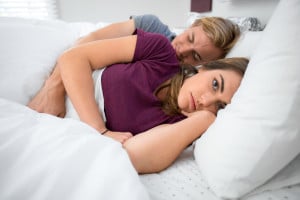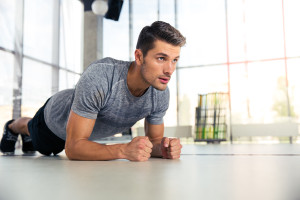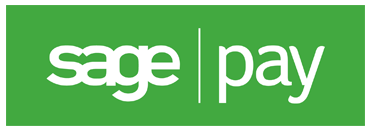Erectile Dysfunction Exercises

Erectile dysfunction or as sometimes termed impotence is the inability to get or sustain an erection for a time sufficient to have sexual intercourse. It is common among men of all ages and many men experience that during stressful times.
Causes of erectile dysfunction
Many various factors affecting your vascular, nervous or endocrine system can contribute or result in erectile dysfunction. Some are listed next:
1. Specific diseases and health conditions:
- Cardiovascular disease.
- Type 2 diabetes.
- Atherosclerosis.
- Chronic kidney disease.
- Multiple sclerosis.
- Pelvic surgeries.
- Spinal injuries.
- Blood vessels diseases.
- Hormonal imbalance.
- Stroke.
2. Specific drugs from certain categories:
- Blood pressure drugs.
- Antidepressants.
- Anti-ulcer drugs.
- Diuretics (used to help the body remove excess sodium and water for treating heart failure, liver failure, and certain kidney disorders).
- Antihistamines.
- Anti-androgens (for prostate cancer treatment).
- Anticholinergics (used to treat an overactive bladder, incontinence, and symptoms of Parkinson’s disease).
- Anticancer drugs.
- Appetite Suppressants.
3. Psychological and emotional factors like:
- Stress and anxiety.
- Depression.
- Low self-confidence.
- Feeling guilty about sexual performance or certain sexual activities.
4. Lifestyle-related factors:
- Obesity.
- Alcohol.
- Drugs use.
- Smoking.
Numerous treatment options are available for erectile dysfunction treatment ranging from medicines to lifestyle changes. Phosphodiesterase type 5 inhibitors are the most popular choice that the majority take. If you are not familiar with the term ‘’phosphodiesterase type 5 inhibitors’’, then the popular word Viagra will make sense to you. Actually, Viagra and some other names that you probably heard somewhere like Levitra or Cialis are all examples of the drug group, phosphodiesterase type 5 inhibitors. They provide better blood flow to the penis and hence alleviate the difficulty of developing an erection. When the psychological factors are the ones responsible for the erectile dysfunction, then counselling and talking therapy would be very beneficial.
Lifestyle reforming is also advised for erectile dysfunction sufferers. Weight loss and exercise are reported to be effective for treating it. A study in the United Kingdom revealed that pelvic exercises aided 40% of males with erectile dysfunction to restore their normal erections and another 33.5% to have significant improvement. In the next section pelvic and other exercises for erectile dysfunction are described.
Erectile Dysfunction Exercises
1. Pelvic Floor (Kegel) Exercises:
Pelvic floor muscles are crucial in maintaining the blood flow to the penis and hence developing erections. Therefore, pelvic floor exercises or Kegels are stated to be the most useful for erectile dysfunction.
To do it you should breathe out, squeeze the pelvic muscles and count 1, 2 and 3 then relax. After that, breathe in and release for another 1, 2 and 3. It is so simple, isn’t it? But focus on squeezing the right muscles because you can easily target the wrong ones. Don’t include the stomach, buttocks or leg muscles. You can repeat that 10 to 20 times, two or three times a day. You possibly won’t be able to do 10 Kegels from the first try. It’s okay. Do what you can, and in the end, you will get the 20 Kegels three times a day.
You can try this exercise in different positions; lying down with the knees bent, the feet flat on the floor, and the arms by the sides- is one option. Another one is sitting down with your feet flat on the floor and your hands on the side. Standing straight with the arms by the sides is a third position to give it a try.
Pelvic floor exercises don’t help with erectile dysfunction only, they also aid in reducing urinary or bowel incontinence and enhancing the overall sexual experience.
2. Pilates Exercises:
This group of exercises would pose the challenge of maintaining pelvic floor strength while moving. They involve:
- Knee fallouts: in which you would have the same lying position as with the Kegels, then start exhaling and squeezing the pelvic floor muscles. The additional thing is you slowly start lowering one knee down to the extent in which you are still able to maintain activation of the pelvic floor muscles. When you inhale, you release the muscles and return the knee to the first position. Now, switch to the other side and do the same. You can reach up to 10 repetitions per side (I know it will be hard again form the first shot, but you will get there eventually).
- Supine foot raises: Here again go to the basic position for the pelvic floor exercise (I won’t make it a tough task if you started reading form this point, so that position is simply done by laying down with the knees bent, the feet flat on the floor, and the arms by the sides). After breathing out and squeezing the pelvic floor muscles slowly raise one foot off the floor, the lower it down while breathing in. Do the same for the other side as well.
- Pelvic curl: Here, after getting into the basic Kegel laying position, don’t move your knees or your feet. Instead, tilt the pelvis upward while pressing the back flat against the floor. Then, gradually lift the buttocks and squeeze them while pushing the heels into the floor. After taking three breaths, gradually lower the buttocks and back to the floor. Do it for 3-4 times then upgrade to 10 repetitions.
Other Exercises:
Moving the muscles beyond the pelvic floor has also been stated to help in combating erectile dysfunction. According to a recent study, the aerobic exercise is also beneficial for improving erectile dysfunction as they improve the overall health and help with various conditions leading to erectile dysfunction like obesity, diabetes and vascular disease.
In a systemic review that was published this year, the authors reported that people who have practised an aerobic exercise four times a week witnessed great improvements with their erectile dysfunction. The exercises varied between cycling, boxing, rowing, running and skipping. If it is too much for you consider brisk walking 30 minutes a day, three to four times a week, that might be enough to boost your cardiovascular health and reduce or eliminate the erectile dysfunction.
Outlook
Real improvement of erectile dysfunction has been reported after making lifestyle changes. Regulating the diet and performing exercises, particularly those that target the pelvic floor muscles and some aerobics, can aid in reducing or eliminating ED. But, remember when you exercise:
For pelvic floor exercise:
- Initially, you may only do the exercise for 3-4 times.
- You will build your strength by practice, so eventually, you will do it up to 10 times a day.
For aerobics:
- Each session should last a minimum of 40 minutes.
- You should maintain the aerobics in your schedule for at least 6 months.
References
- Heaton JPW, Adams MA. Causes of erectile dysfunction. Endocrine 2004;23:119-23.
- Miller TA. Diagnostic evaluation of erectile dysfunction. American family physician 2000;61:95-104.
- Derby CA, Mohr BA, Goldstein I, Feldman HA, Johannes CB, McKinlay JB. Modifiable risk factors and erectile dysfunction: can lifestyle changes modify risk? Urology 2000;56:302-06.
- Dorey G, Speakman MJ, Feneley RCL, Swinkels A, Dunn CDR. Pelvic floor exercises for erectile dysfunction. BJU international 2005;96:595-97.
- Dorey G, Speakman M, Feneley R, Swinkels A, Dunn C, Ewings P. Randomised controlled trial of pelvic floor muscle exercises and manometric biofeedback for erectile dysfunction. Br J Gen Pract 2004;54:819-25.
- Sikiru L, Agbanusi EC, Nwacha CR. Effects of aerobic exercise in the management of erectile dysfunction: a meta-analysis study on randomized controlled trials. Ethiopian journal of health sciences 2011;21.
- Bullo V, Bergamin M, Gobbo S, Sieverdes JC, Zaccaria M, Neunhaeuserer D, Ermolao A. The effects of Pilates exercise training on physical fitness and wellbeing in the elderly: a systematic review for future exercise prescription. Preventive medicine 2015;75:1-11.




